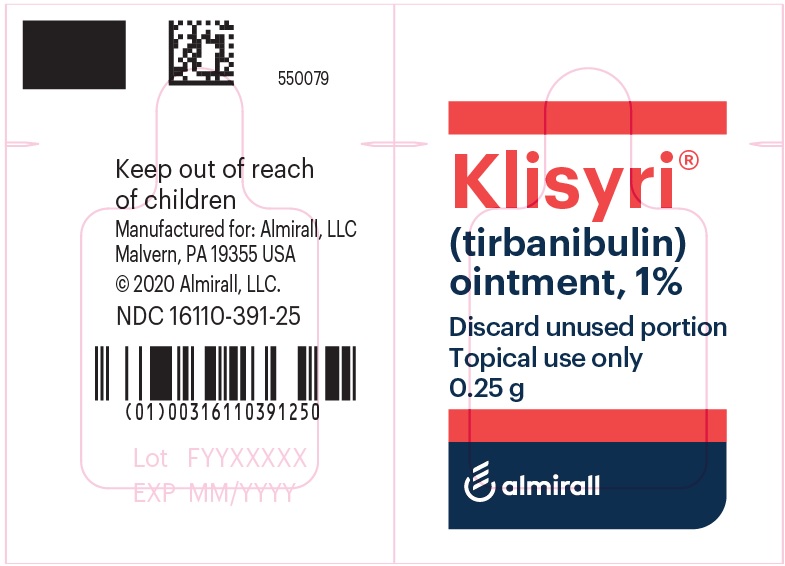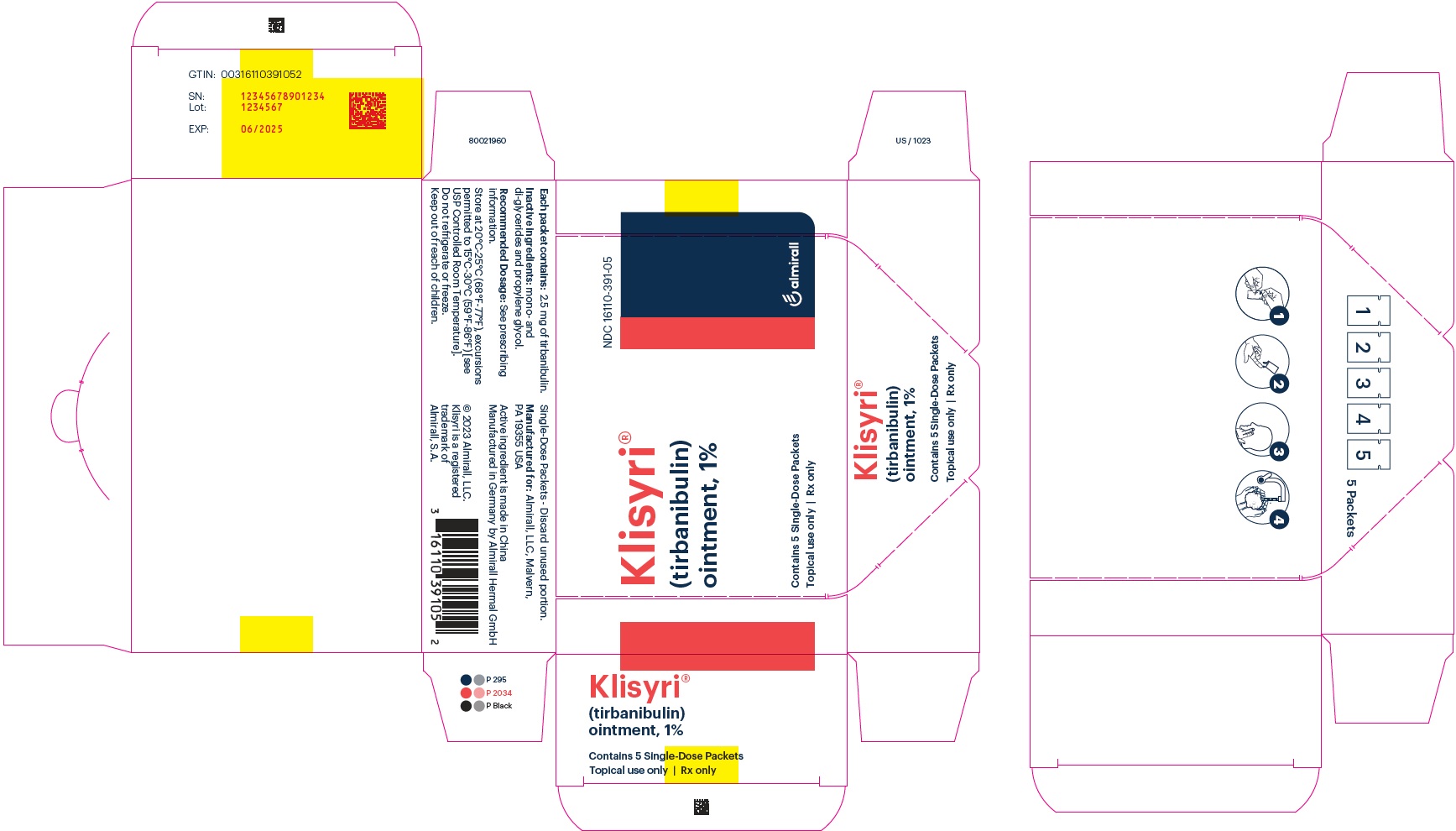Klisyri
Generic name: tirbanibulin topical
Drug class: Topical antineoplastics
Medically reviewed by A Ras MD.
What is Klisyri?
Klisyri is a prescription medicine used on the skin to treat actinic keratosis on the face or scalp. It is not known if Klisyri is safe and effective in children less than 18 years of age.
Description
KLISYRI (tirbanibulin) ointment is a microtubule inhibitor for topical use. The chemical name of tirbanibulin is N-benzyl-2-(5-(4-(2-morpholinoethoxy)phenyl)pyridin-2-yl) acetamide. The molecular weight is 431.4 and the molecular formula is C26H29N3O3. Tirbanibulin’s structural formula is:

Tirbanibulin ointment 1% contains 10 mg tirbanibulin per gram of white to off-white ointment containing mono- and di-glycerides and propylene glycol.
Mechanism of Action
Tirbanibulin is a microtubule inhibitor. The mechanism of action of KLISYRI for the topical treatment of actinic keratosis is unknown.
What is the most important information I should know about Klisyri?
Klisyri is for use on the skin only (topical). Do not use Klisyri in, around, or near your eyes, mouth or lips.
What should I tell my healthcare provider before using Klisyri?
Before using Klisyri, tell your healthcare provider about all of your medical conditions, including if you:
- are being treated or have been treated for actinic keratosis with any other medicine, procedure, or surgery. You should not use Klisyri until your skin has healed from other treatments.
- have other skin problems in the treatment area.
- are pregnant or plan to become pregnant. It is not known if Klisyri can harm your unborn baby.
- are breastfeeding or plan to breastfeed. It is not known if Klisyri passes into your breast milk. Talk to your healthcare provider about the best way to feed your baby during treatment with Klisyri.
Tell your healthcare provider about all the medicines you take, including prescription and over-the-counter medicines, vitamins and herbal supplements.
How should I use Klisyri?
- Use Klisyri as your healthcare provider tells you to. Klisyri is for skin use only.
- Apply Klisyri to evenly cover the treatment area(s) on the face or scalp 1 time a day for 5 days in a row (consecutive) using 1 single dose packet with each application. Do not apply Klisyri to other areas.
- Do not use more Klisyri than you need to cover the treatment area. Using too much Klisyri, or using it too often, or for too long can increase your chances of having a severe skin reaction or other side effects.
- Do not cover the treatment area with a dressing after application of Klisyri. Irritation of the skin may happen if a dressing is applied to the treatment area.
- Do not get Klisyri in, around, or near your eyes. Do not touch your eyes while you are applying Klisyri.
- Wash your hands right away with water and soap after applying Klisyri. After applying Klisyri, be careful to keep Klisyri on the treated area from coming into contact with your eyes. Irritation may happen if you get Klisyri in your eyes.
- If you accidently get Klisyri in your eyes, flush them with water and get medical care as soon as possible. See, “What are the possible side effects of Klisyri?”
- Do not get Klisyri in, around, or near your mouth or lips.
- Avoid washing and touching the treated area for approximately 8 hours after application of Klisyri. After 8 hours, you may wash the area with a mild soap and water.
- Avoid transferring the product to other areas after application.
- Throw away any open packet of Klisyri after use even if there is medicine still left in it.
What are the possible side effects of Klisyri?
Klisyri may cause serious side effects, including:
- Eye irritation can happen if Klisyri gets into your eyes. If you accidentally get Klisyri into your eyes, flush them with water and get medical care as soon as possible.
- Local skin reactions are common but can also be severe during treatment with Klisyri. Call your healthcare provider if you develop any local skin reactions including redness, flaking or scaling, crusting, or swelling that is more severe, or if you get blisters, peeling, pus, ulcers, or breakdown of your skin.
The most common side effects of Klisyri include: itching or pain in the treatment area.
These are not all of the possible side effects of Klisyri. Call your doctor for medical advice about side effects. You may report side effects to FDA at 1-800-FDA-1088.
General information about the safe and effective use of Klisyri
Medicines are sometimes prescribed for purposes other than those listed in a Patient Information leaflet. Do not use Klisyri for a condition for which it was not prescribed. Do not give Klisyri to other people, even if they have the same symptoms you have. It may harm them. You can ask your pharmacist or healthcare provider for information about Klisyri that is written for health professionals.
How should I store Klisyri?
- Store at room temperature between 68°F to 77°F (20°C to 25°C) .
- Do not refrigerate or freeze.
- Safely throw away used Klisyri packets in household trash.
- Keep Klisyri and all medicines out of the reach of children.
What are the ingredients in Klisyri?
Active ingredient: Tirbanibulin
Inactive ingredients: Mono- and di-glycerides and propylene glycol.
Label
PRINCIPAL DISPLAY PANEL – NDC: 16110-391-05 – PACKET LABEL

PRINCIPAL DISPLAY PANEL – NDC: 16110-391-05 – CARTON LABEL
